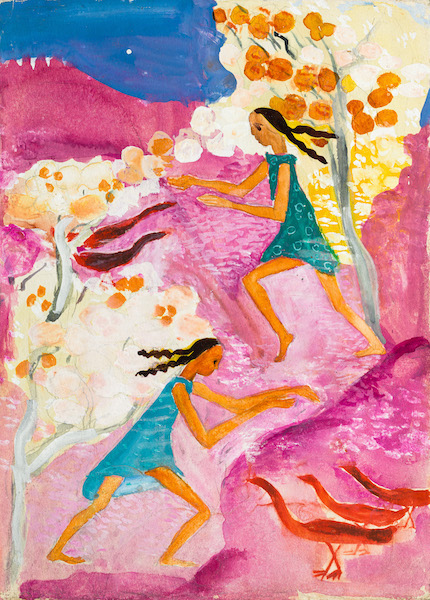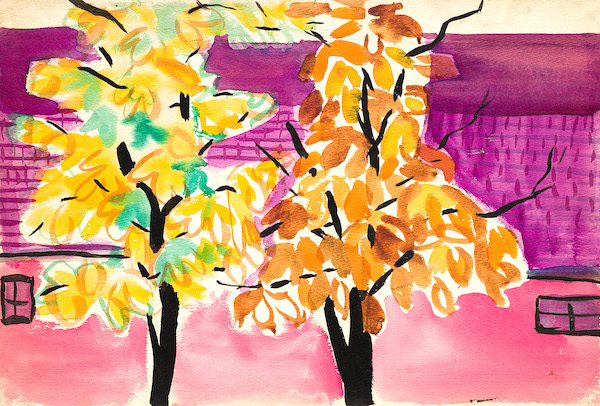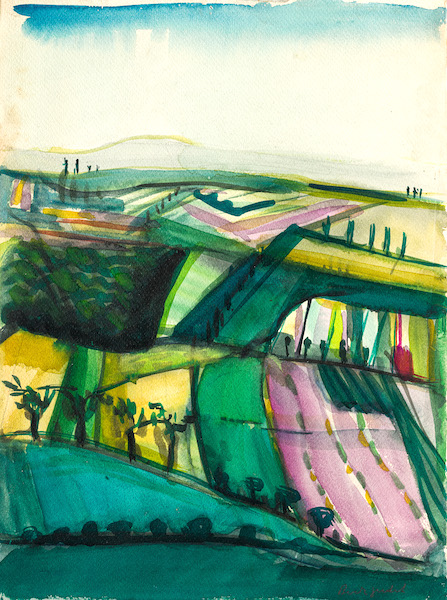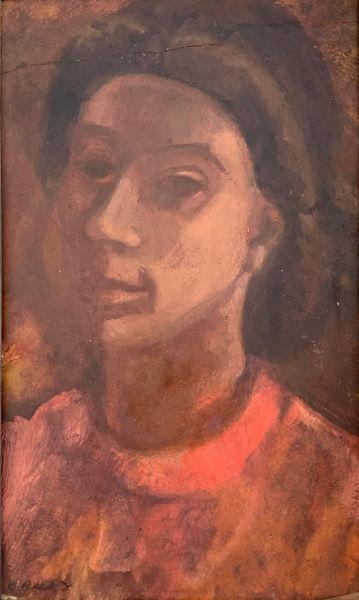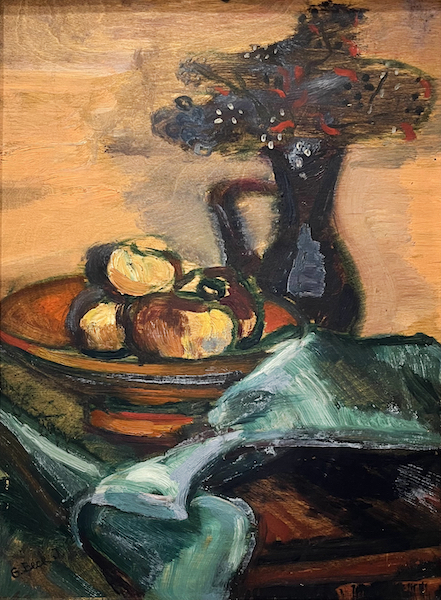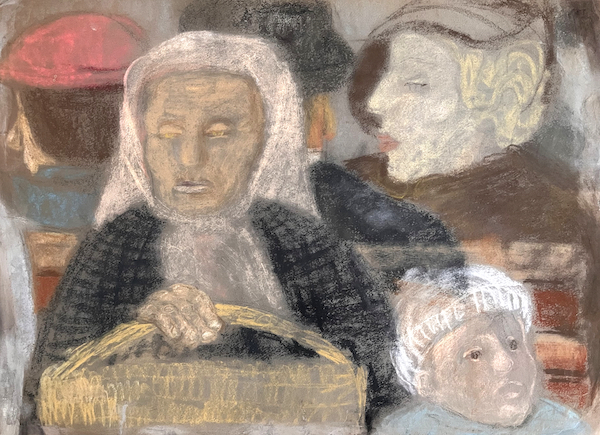Biography
Judit Beck is a significant, yet undiscovered creators of the modern Hungarian painting between the two wars. As a talented daughter of the sculptor of Fülöp Beck Ö., she started painting at the College of Fine Arts in Budapest at the age of 16, where she became a student of István Csók together with Sándor Trauner and György Kepes. In addition to Csók, János Vaszary also taugh her: during these years Beck was characterized by the use of decorative colors, statics, sharp outlines, post-expressionism and new objectivity.
Starting from 1929, she spent her summers creating with Alice Bélaváry, Erzsébet Vaszkó and Emil Krocsák in Drégelypalánk, Nógrád County. There she also met Jenő Gadányi, Lajos Kassák, Márk Vedres and Ernő Kállai. The bright colors of her paintings on Drégelypalánk, cyclamen, ultramarine and lemon yellow were inspired by the folk costumes there.
In 1934 she married the art historian György Gombosi, who inspired her art in new ways. They traveled to London, Paris and Switzerland, visited the artists in Szentendre and the studio of Gyula Derkovits. This latter experience defined the painter's works between 1935 and 1940: her paintings turned into a much darker color, with intimate, emotional portraits at the center of her themes. In addition to the her so-called black period, the art of the early 1940s was defined by Beck's secret love affair with Miklós Radnóti. The painter made several portraits of the poet, and Radnóti wrote several love poems of her (Rain, Third ecloga).
In 1942, she became acquainted with the actor Tamás Major through a theatrical production, who later became her husband. In the second half of the 1940s, she painted together with János Kmetty and Margit Gráber, and manual workers became the focus of her oeuvre.


